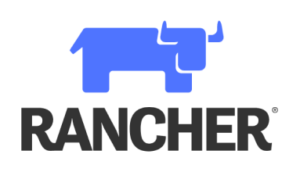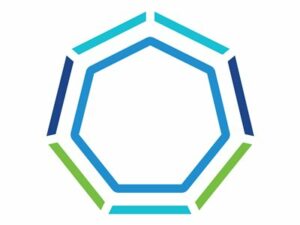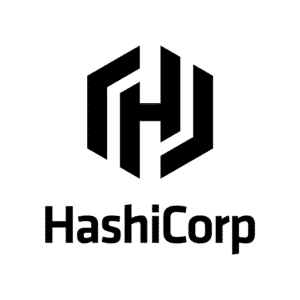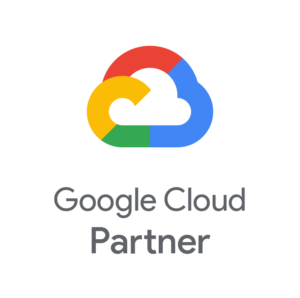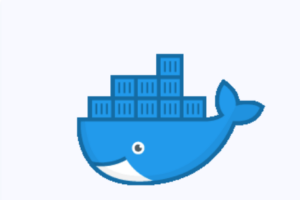VMware vRealize Automation: Install, Configure, Manage [V8.3]
Questo corso di cinque giorni si concentra sull’installazione, la configurazione e la gestione di VMware vRealize® Automation™. Si apprende come vRealize Automation possa essere utilizzato per automatizzare la distribuzione di macchine virtuali, applicazioni e servizi IT personalizzati in diversi data center e ambienti cloud ibridi.
Il corso spiega come gestire sia i sistemi on-premise che i servizi cloud. Il corso illustra come vRealize Automation Service Broker può aggregare contenuti in formati nativi provenienti da più cloud e piattaforme in un catalogo comune.
Il corso tratta anche dell’interfacciamento di vRealize Automation con altri sistemi utilizzando VMware vRealize® Orchestrator™ e di come utilizzare vRealize Automation per gestire sistemi Kubernetes e sfruttare altri sistemi. Il corso tratta anche l’integrazione con Terraform e l’utilizzo di SaltStack come strumento di gestione della configurazione.
COD: VRAICM83
Categorie: VMware

Metodologia didattica
Il corso prevede laboratori didattici in cui ciascuno studente potrà lavorare ai fini di portare a termine esercizi formativi che forniranno esperienza pratica nell’utilizzo dello strumento, per ciascuno degli argomenti affrontati durante il corso.
Chi dovrebbe partecipare
Amministratori di sistema esperti e integratori di sistema responsabili della progettazione e dell’implementazione di vRealize Automation
Questo corso è consigliato se si vuole ottenere la seguente certificazione:
- VMware Certified Advanced Professional – Data Center Virtualization (VCAP-DCV) Design
Prerequisiti
Questo corso richiede il completamento di uno dei seguenti corsi:
È utile avere esperienza di lavoro alla riga di comando.
Questo corso richiede che lo studente sia in grado di eseguire le seguenti operazioni senza assistenza o guida prima di iscriversi al corso:
- Creare oggetti VMware vCenter Server®, come data center e cartelle.
- Creare una macchina virtuale utilizzando una procedura guidata o un modello.
- Modificare l’hardware di una macchina virtuale
- Migrare una macchina virtuale con VMware vSphere® vMotion®.
- Migrare una macchina virtuale con VMware vSphere® Storage vMotion®.
- Configurare e gestire un cluster vSphere DRS con pool di risorse.
- Configurare e gestire un cluster VMware vSphere® High Availability.
Se non si è in grado di eseguire tutte queste attività, VMware consiglia di completare uno dei corsi prerequisiti prima di iscriversi a VMware vRealize Automation: Install, Configure, Manage.
Conoscenze/Competenze in uscita
Al termine del corso, dovreste essere in grado di raggiungere i seguenti obiettivi:
- Descrivere l’architettura di vRealize Automation e i casi d’uso in ambienti cloud.
- Gestire le entità di vRealize Automation su infrastrutture virtuali e cloud VMware e di terze parti.
- Configurare e gestire account cloud, progetti, mappature dei flavor, mappature delle immagini, profili di rete, profili di storage, volumi, tag e servizi.
- Creare, modificare, gestire e distribuire modelli di Cloud
- Connettersi a un cluster Kubernetes e gestire gli spazi dei nomi.
- Personalizzare servizi e macchine virtuali con cloudConfig
- Configurare e gestire il Service Broker
- Configurare e gestire azioni ABX, proprietà personalizzate, sottoscrizioni al broker di eventi e flussi di lavoro di vRealize Orchestrator.
- Integrazione con vRealize Orchestrator
- Installare vRealize Automation con Lifecycle Configuration Manager
- Descrivere i servizi di automazione del cloud (Cloud Assembly e Code Stream).
- Integrare Cloud Assembly con Terraform e SaltStack.
- Utilizzare i log e i comandi CLI per monitorare e risolvere i problemi di vRealize Automation.
Programma didattico
1 Introduzione al corso
- Introduzione e logistica del corso
- Obiettivi del corso
2 Panoramica e architettura di vRealize Automation
- Descrivere lo scopo e le funzionalità di vRealize Automation
- Descrivere l’architettura di vRealize Automation
- Descrivere l’utilizzo di VMware Workspace ONE® AccessTM
- Descrivere la relazione tra cluster Kubernetes, container e servizi di vRealize Automation.
- Descrivere i comandi della CLI per la gestione dei cluster di vRealize Automation 8.
- Descrivere il Cloud Assembly
- Descrivere il Service Broker
- Descrivere il flusso di codice
3 Installazione di vRealize Automation
- Elencare i diversi tipi di distribuzione di vRealize Automation
- Descrivere lo scopo di vRealize easy installer
- Descrivere il processo di installazione di vRealize Automation
4 Autenticazione e autorizzazione
- Identificare le fasi dell’integrazione di Workspace One con Active Directory.
- Descrivere le caratteristiche di Workspace One
- Descrivere i ruoli utente disponibili in vRealize Automation
- Identificare le attività principali eseguite da ciascun ruolo utente
- Definire ruoli personalizzati
- Configurare il branding e la multitenancy
5 Configurazione iniziale di base
- Creare rapidamente una configurazione di base con un account cloud, una zona cloud, un progetto, una mappatura dei sapori e una mappatura delle immagini.
6 Modelli cloud VMware
- Configurazione e distribuzione di un modello cloud di base
- Creare modelli cloud che possono essere eseguiti su qualsiasi cloud.
- Utilizzare cloudConfig per eseguire comandi, installare software e creare utenti.
- Utilizzare YAML per input, variabili e distribuzioni condizionali.
7 Tag e configurazione dello storage
- Configurare i tag
- Descrivere i diversi tipi di tag
- Gestire i tag
- Configurare i profili di archiviazione
- Utilizzare i tag e i profili di storage
8 Integrazione di NSX-T Data Center
- Elencare le funzionalità e i casi d’uso di NSX-T Data Center
- Descrivere l’architettura e i componenti di NSX-T Data Center
- Integrare NSX-T Data Center con vRealize Automation
- Elencare i profili di rete supportati in vRealize Automation.
- Utilizzare i componenti di NSX-T Data Center per progettare un’applicazione multitier Cloud Template
- Identificare le opzioni di rete e sicurezza disponibili in Design Canvas.
- Creare e gestire reti e gruppi di sicurezza su richiesta.
- Configurare le azioni del giorno 2 di NSX-T
9 Integrazione con i cloud pubblici
- Configurare e utilizzare gli account di VMware Cloud Foundation
- Configurare e utilizzare un account del cloud AWS
- Configurazione e utilizzo di un account cloud Azure
- Configurazione e utilizzo di un account cloud Google Cloud Platform
10 Utilizzo di Service Broker per la gestione del catalogo
- Rilascio di un modello cloud VMware
- Definire l’origine dei contenuti e la condivisione dei contenuti
- Definire l’applicazione dei criteri di Service Broker
- Utilizzare moduli personalizzati per gli elementi del catalogo
11 Estensibilità di vRealize Automation
- Descrivere l’estensibilità
- Utilizzare gli argomenti degli eventi
- Creare una sottoscrizione
- Richiamare un flusso di lavoro di vRealize Orchestrator
- Creare azioni ABX
12 Utilizzo del flusso di codice
- Introduzione a Code Stream
- Il processo CI/CD
- Integrazione di GitLab con Code Stream e Cloud Assembly
- Utilizzare Code Stream per installare il software
13 Utilizzo di Terraform
- Integrare Cloud Assembly con Terraform
- Utilizzare Terraform con un modello cloud VMware
- Utilizzare Terraform con Code Stream
14 Utilizzo dei cluster Kubernetes
- Introduzione a Kubernetes
- Connettersi a un cluster Kubernetes esistente
- Integrazione di VMware Tanzu™ Grid Integrated Edition
- Creare uno spazio dei nomi del supervisore come elemento del catalogo
15 Utilizzo di SaltStack per la gestione della configurazione
- Introduzione a SaltStack con vRealize Automation
- Utilizzare SaltStack per la distribuzione del software
- Utilizzare SaltStack per la gestione della configurazione
- Utilizzare SaltStack con l’orchestrazione guidata dagli eventi
16 Risoluzione dei problemi e integrazione di vRealize Automation
- Posizione dei log
- Utilizzo dell’attività
- Monitoraggio della cronologia di distribuzione
- Risoluzione dei problemi di base
- Comandi CLI
- Raccolta dei log (console VAMI)
- Integrazione con VMware vRealize® Log Insight
- Integrazione con vRealize Operations
- Migrazione di vRealize Automation 7.x a 8
Durata – 5 giorni
Erogazione – in Aula, On Site, Remoto
Requisiti PC e SW:
- Connessione Internet
- Web browser, Google Chrome
- Zoom
Language
Trainer: Italiano
Labs: Inglese
Slides: Inglese



